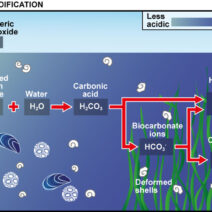The rainforest, often referred to as the “lungs of the Earth,” harbors an extraordinary abundance of flora and fauna. These ecosystems, teeming with life, have long captivated human fascination and spurred numerous conservation efforts. Rainforests cover only about 6% of the Earth’s surface, yet they are home to more than half of the world’s terrestrial plant and animal species. This staggering biodiversity is not an incidental feature; it underscores the inherent value and functional roles that rainforests play in sustaining life on our planet.
One commonly observed phenomenon is the public’s emotional connection to rainforests. From the vibrant hues of their vegetation to the symphonic cacophony of wildlife sounds, rainforests evoke a sense of wonder and beauty. They stand as living testaments to the resilience and interconnectedness of life. However, beneath this surface-level appreciation lies a more profound recognition of the critical contributions that rainforests make to global ecology, climate regulation, and human well-being.
Firstly, rainforests function as carbon sinks, absorbing vast quantities of carbon dioxide from the atmosphere. This process is vital in mitigating climate change, as carbon dioxide is a leading greenhouse gas responsible for global warming. Deforestation, however, has released billions of tons of carbon back into the atmosphere. When trees are cut down or burned, not only is this stored carbon emitted, but the capacity for future carbon sequestration diminishes. Protecting and restoring rainforests, therefore, can significantly diminish climate change effects and promote a more stable climate.
Moreover, rainforests are crucial for regulating the Earth’s water cycle. They play a vital role in precipitation patterns and help maintain regional and global humidity levels. Through a process called transpiration, trees release water vapor into the atmosphere, which contributes to cloud formation and rainfall. The loss of these crucial ecosystems can lead to altered weather patterns, resulting in more severe droughts and floods. Such changes can have cascading effects on agriculture, drinking water supplies, and ultimately the food security of millions of people worldwide.
The rich biodiversity within rainforests also provides invaluable resources, many of which are still yet to be discovered. More than 25% of modern medicines originate from rainforest plants. For instance, the rosy periwinkle, native to the Madagascar rainforest, has been utilized in treating leukemia and lymphoma. The potential for discovering new pharmaceuticals is significant; however, deforestation jeopardizes numerous undiscovered species and their possible contributions to human health.
It is also essential to consider the indigenous communities that have thrived in these ecosystems for millennia. These populations often possess intricate knowledge of the rainforest’s biodiversity, utilizing its resources sustainably. Protecting their lands not only supports cultural heritage but also upholds conservation principles. Indigenous stewardship of land has shown that when local communities are involved in conservation strategies, both biodiversity and the livelihoods of those communities improve.
Despite the urgent need to protect rainforests, continued deforestation and industrial exploitation remain rampant. Issues like illegal logging, agricultural expansion, and infrastructure development threaten these vital ecosystems. The Amazon rainforest, for instance, has seen alarming rates of deforestation attributed to cattle ranching and soy production. The consequences of such practices extend far beyond ecological damage; they pose a direct threat to the natural world and humanity’s future survival.
Addressing the crisis of rainforest destruction requires global cooperation and comprehensive approaches. Policy frameworks that emphasize sustainable land use, reforestation initiatives, and support for indigenous land rights are crucial. Global environmental agreements, such as the Paris Agreement, also underscore the interdependence of nations when addressing climate change and rainforest conservation. Financial mechanisms to fund conservation efforts, including payment for ecosystem services, can incentivize countries to retain their rainforest cover instead of succumbing to short-term economic pressures.
Furthermore, the rise of eco-tourism presents an opportunity for sustainable economic growth while simultaneously advocating for conservation. Eco-tourism educates visitors and generates revenue for local communities, helping create a direct link between tourism and environmental preservation. It encourages people to appreciate the rainforest’s beauty while fostering a deeper understanding of its ecological importance.
Ultimately, saving the rainforest could indeed save us all, as it ensures the preservation of essential ecological functions that sustain life. By recognizing the intricate bonds between biodiversity, climate stability, and human health, a powerful narrative emerges, underscoring the need for immediate action. If we can collectively harness our fascination with rainforests into activism and conservation policies, we may not only preserve these irreplaceable ecosystems but also secure a healthy future for generations to come.
The future of our planet is intricately tied to the fate of rainforests. Protecting these natural treasures is not merely an environmental issue; it is a matter of survival for humanity. As stewards of this planet, we hold the responsibility and the power to act decisively. The question is not only whether we can save the rainforests, but also whether we choose to do so, understanding the broader implications of our actions for all life on Earth.








